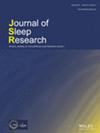Clozapine and objective assessment of hypersomnolence in patients with schizophrenia: a systematic review
Abstract
Clozapine is effective in treatment-resistant schizophrenia but with adverse effects including sedation. Excessive daytime sleepiness, a symptom of hypersomnolence, is the most frequently reported subjective side-effect. The aim of this systematic review was to synthesise the literature evaluating the impact of clozapine on the objective assessment of hypersomnolence in people with schizophrenia. We systematically searched databases for articles evaluating hypersomnolence with electrophysiological or psychomotor/cognitive measures in clozapine-treated patients with schizophrenia. Objective assessment of hypersomnolence was evaluated in six studies. All studies using polysomnography (PSG) found significantly longer total sleep time and shorter sleep onset latency in patients treated with clozapine at initiation of clozapine. The study with the multiple sleep latency test (MSLT) also found a shorter sleep onset latency. These observations did not persist 4–6 weeks after treatment initiation. Further investigations are needed. Longer total sleep time should be investigated with standardised long-term PSG to investigate excessive sleep quantity. Shorter sleep onset latency should be investigated with the MSLT or the maintenance of wakefulness test to investigate the excessive propensity to fall asleep or ability to stay awake. Lastly, sleep inertia should be investigated specifically in the morning.

 求助内容:
求助内容: 应助结果提醒方式:
应助结果提醒方式:


